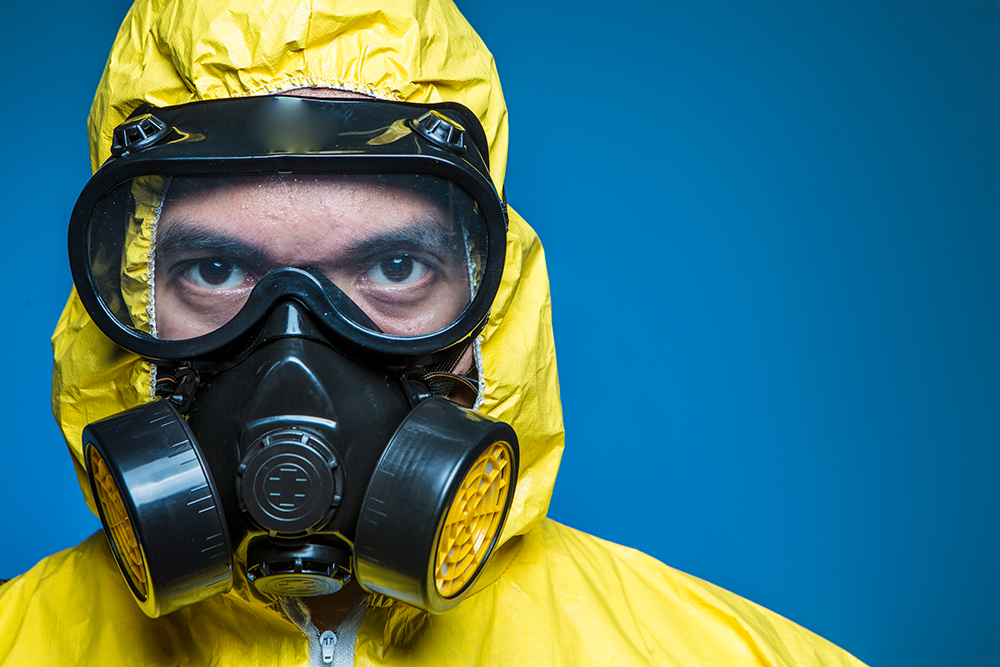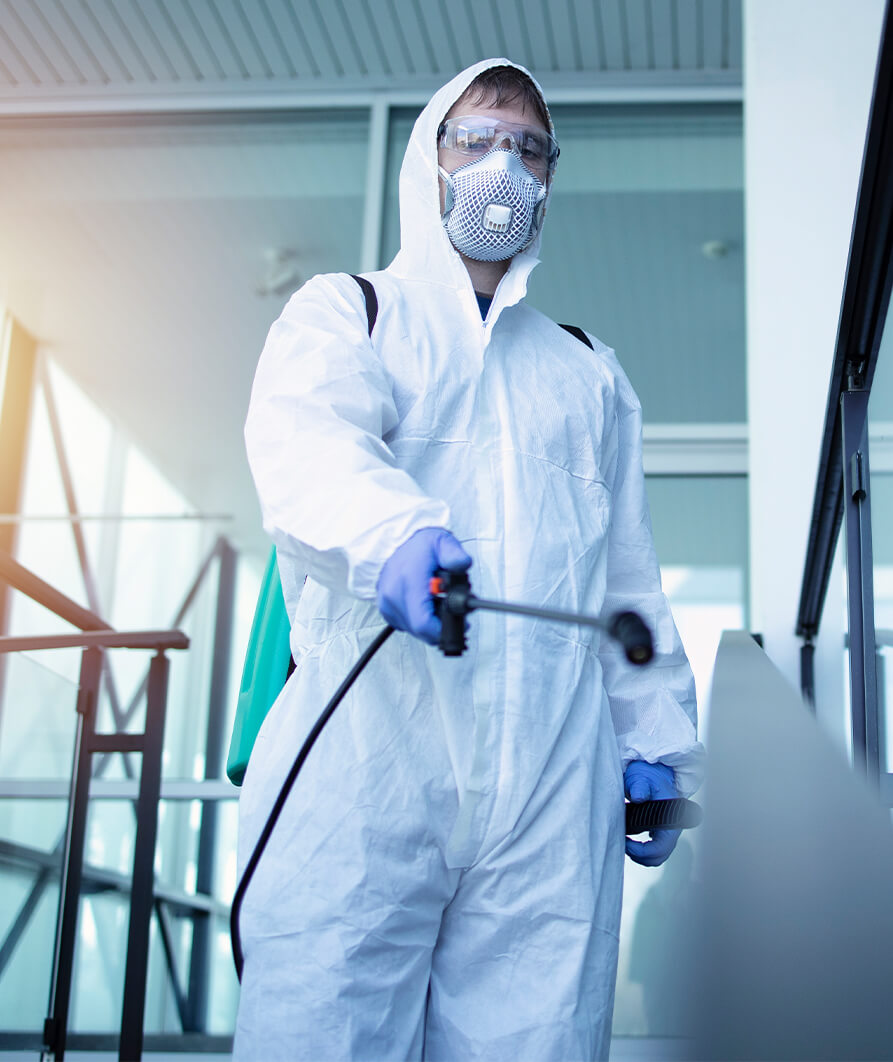Professional Homicide and Suicide Cleanup: Compassionate and Discreet Solutions
Professional Homicide and Suicide Cleanup: Compassionate and Discreet Solutions
Blog Article
Expert Biohazard Cleansing and Decontamination for Blood, Bodily Fluids, and Hazardous Products
In the realm of biohazard cleaning and decontamination for blood, bodily fluids, and dangerous products, accuracy and knowledge are paramount. The prospective health and wellness dangers connected with direct exposure to biohazards underscore the essential need for precise handling and thorough cleanup. Specialized training gears up experts with the expertise and skills essential to address these hazardous circumstances effectively. Nonetheless, it is not simply concerning tidying up; the significance of employing correct purification techniques can not be overemphasized. As we navigate the complex landscape of biohazard cleaning, comprehending the subtleties of guidelines, conformity, and the customized tools at play ends up being important in making certain a secure and detailed decontamination process.
Wellness Dangers of Biohazard Direct Exposure
Direct exposure to biohazards presents significant wellness threats that can lead to severe effects for communities and people alike. Biohazards include a large range of biological compounds, including blood, bodily fluids, mold and mildew, bacteria, viruses, and various other possibly transmittable products. When individuals come right into call with these biohazards, whether via crashes, improper handling, or environmental direct exposure, they face the threat of having serious illnesses or diseases.
Among the main health and wellness threats linked with biohazard exposure is the transmission of infectious conditions. Bloodborne microorganisms such as HIV, hepatitis B and C, and numerous bacteria can be existing in biohazardous materials, posing a straight danger to human wellness. Breathing in air-borne biohazards like mold and mildew spores or entering contact with infected surfaces can additionally result in respiratory problems, allergic reactions, and various other adverse wellness effects.
Moreover, biohazard exposure can have long-lasting wellness ramifications, with some conditions manifesting years after the first call (Blood Cleanup). Consequently, it is essential to prioritize proper biohazard cleansing and purification to alleviate these wellness threats and make sure the safety of communities and people

Specialized Educating for Biohazard Cleaning
When it comes to managing biohazard clean-up successfully and securely, specialized training plays a fundamental duty in making sure appropriate purification treatments are followed. Biohazard cleaning needs certain expertise and abilities to properly reduce dangers connected with bloodborne microorganisms, bodily liquids, and hazardous materials. Specialists learnt biohazard cleaning undertake extensive instruction on just how to securely handle, eliminate, and throw away biohazardous materials to stop contamination and direct exposure.
Specialized training for biohazard clean-up covers a range of essential topics, consisting of correct personal protective equipment (PPE) usage, bloodborne virus understanding, decontamination techniques, and harmful waste disposal protocols. Individuals educated in biohazard cleaning are outfitted with the necessary expertise to examine contamination degrees, identify possible dangers, and execute proper clean-up treatments in compliance with governing standards.
Continuous training and education and learning are vital in the area of biohazard cleaning to stay upgraded on the most current decontamination modern technologies, safety procedures, and policies. By purchasing specialized training, biohazard clean-up experts can successfully reply to emergency situation cleanup situations and safeguard both public wellness and the setting.
Relevance of Correct Purification Techniques
Making use of proper purification methods is critical in biohazard cleanup to successfully decrease and get rid of harmful products health dangers. Efficient purification not just ensures the elimination of visible traces of blood, bodily fluids, and various other biohazards however likewise targets unnoticeable virus that might pose severe health dangers if not appropriately eradicated. By adhering to strict purification protocols, trained professionals can significantly decrease the risk of direct exposure to harmful bacteria, viruses, and germs that can lead to infections or conditions.
Correct decontamination techniques include the use of specialized devices and anti-bacterials that are especially created to reduce the effects of biohazards efficiently. Comprehensive cleaning and sanitation of infected areas are necessary to protect against the spread of virus and ensure a risk-free setting for occupants. Additionally, the right disposal of biohazardous waste following purification procedures is essential in avoiding contamination of various other surfaces or individuals.

Tools and Tools for Safe Cleaning
When dealing with blood, bodily liquids, or dangerous products, biohazard cleaning experts rely on specialized gear to reduce direct exposure risks and completely sanitize the afflicted area. In addition, biohazard cleansing packages containing disinfectants, absorbent materials, and biohazard bags are made use of to securely get rid of and have of infected things.
Advanced cleaning devices like hospital-grade disinfectants, HEPA-filtered vacuums, and misting equipments are utilized to sterilize surface areas and eliminate biohazards properly. Specialized tools such as sharps containers and biohazard waste disposal bins are utilized to safely manage sharp objects and biohazardous waste products. By making use of the right equipment and devices, biohazard cleansing professionals can ensure an extensive cleaning procedure that prioritizes safety and security and decreases wellness threats for both employees and passengers of the damaged room.
Rules and Compliance in Biohazard Cleaning
Correct adherence to guidelines and compliance requirements is extremely important in biohazard cleaning to ensure the security of both workers and the setting. Government firms such as OSHA (Occupational Safety And Security and Health And Wellness Management) and the EPA (Environmental Protection Firm) have actually developed specific standards for biohazard clean-up treatments to lessen health and wellness threats and ecological contamination. These policies cover an array of facets consisting of the handling, transportation, and disposal of biohazardous products, along with the needed training and safety devices required for employees associated with the clean-up process.
Biohazard cleaning business should remain updated with these guidelines to ensure that their operations fulfill the required security requirements. Failure to adhere to these policies can cause extreme consequences, including penalties, lawsuit, and jeopardizing the health and wellness of individuals and the atmosphere. By adhering to rigorous laws and conformity steps, biohazard cleaning companies can properly reduce dangers and guarantee a risk-free and extensive clean-up procedure for all events entailed.
Conclusion
In conclusion, biohazard cleaning and decontamination need specific training, proper strategies, and adherence to regulations. Exposure to blood, physical liquids, and harmful products postures substantial wellness risks, making it critical to use the appropriate equipment and tools for secure clean-up. By following strict methods and guidelines, experts can properly alleviate the risks linked with biohazard exposure and ensure the security of both themselves and others.
As we navigate the complex landscape of biohazard cleaning, comprehending the subtleties of regulations, conformity, and the customized tools at play becomes necessary in guaranteeing a thorough and safe decontamination process. (Blood Cleanup)
When it comes to dealing mold remediation with biohazard cleaning efficiently and safely, specialized training plays a fundamental role in guaranteeing correct decontamination procedures are adhered to.Using correct decontamination techniques is essential in biohazard clean-up to successfully decrease and get rid of harmful materials health and wellness threats. Additionally, biohazard cleansing packages consisting of anti-bacterials, absorptive products, and biohazard bags are used to safely include and get rid of of infected items.
Federal government companies such as OSHA (Occupational Safety and Wellness Management) and the EPA (Environmental Defense Company) have established certain standards for biohazard cleaning treatments to reduce wellness risks and ecological contamination.
Report this page